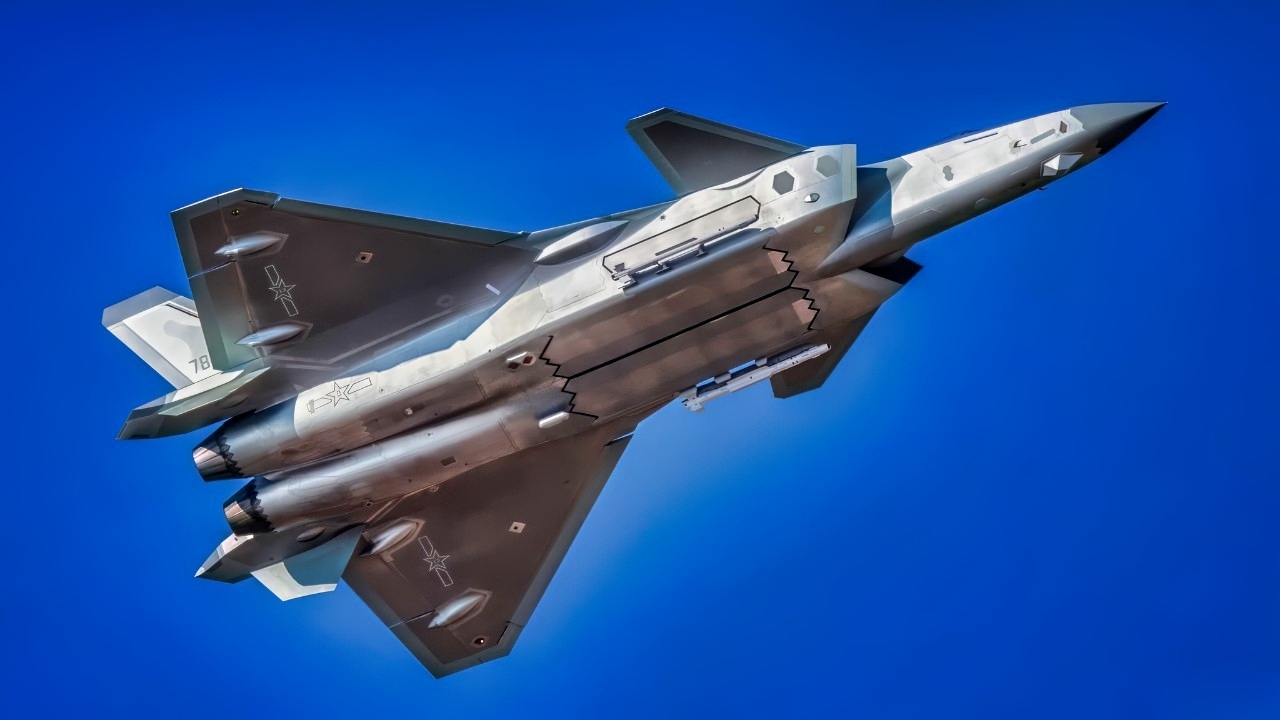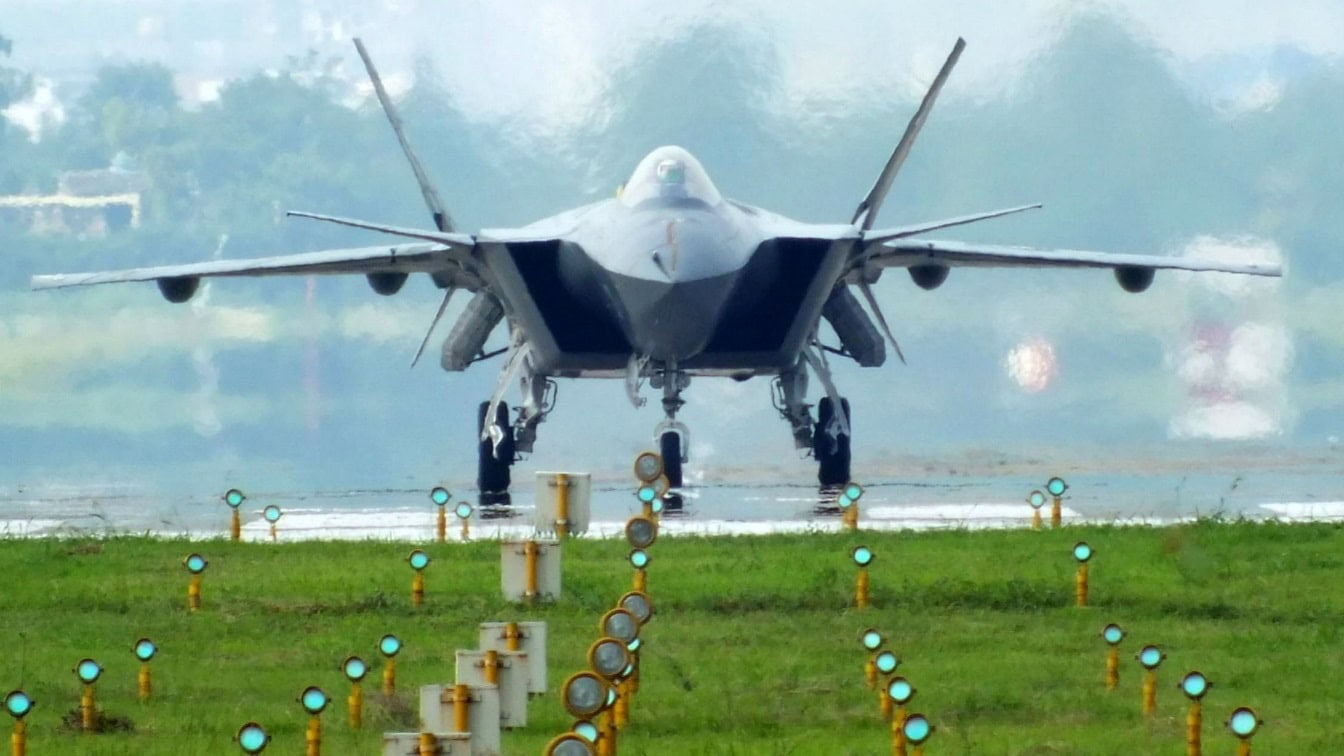Key Points and Summary – Shiny jets like the J-20 and J-35 don’t win fights—pilots do.
-China’s PLAAF flies frequent grey-zone missions near Taiwan, but its aviators lack real combat experience and many instructors have none to pass down.

J-20 Takes Flight For China. Image Credit: Creative Commons/PLAAF.
-To feed new J-20 or J-35 squadrons, China cut a year of intermediate training in 2024 and now graduates ~400 pilots annually (vs. ~1,350 for USAF), with fewer flight schools and heavy reliance on simulators.
-Most pilots track to the J-10; only top performers are later funneled to stealth types.
-The big unknown: can this pipeline produce crews who run the OODA loop faster than U.S. counterparts when it’s no longer practice?
How Well Are Chinese Fighter Pilots Trained?
We love to compare and contrast various airplanes at National Security Journal, but as I often like to point out, if they are engaging in a fly-off or some type of aerial combat, success boils down to the individual pilots.
Dogfights, unless you count a huge melee of fighter jets between India and Pakistan this spring, are rare.
Airplanes and their weapons are often superior depending on their country, make, and model. But it is often the individual pilots who can determine whether an airplane survives in battle or not.
American pilots who fly various fighter jets like the F-22 and F-35 often have prior combat experience, and Chinese aviators do not. This is an aspect that is rarely covered by the defense media.
The People’s Liberation Army Air Force (PLAAF) may have shiny new stealth fighter jets like the J-20 or J-35, but they haven’t experienced the real thing, so the PLAAF may have pilots flying that do not have the right stuff.
Chinese Pilots Partake in ‘Grey Zone Warfare’ Tactics
The PLAAF does send its pilots to realistic scenarios, especially as they rehearse for a potential invasion of Taiwan.
These aviators partake in “grey zone warfare” tactics. This is not actual live fire combat, but it is also not a peaceful activity.
These missions that encroach on Taiwan’s airspace do give PLAAF pilots a taste of high-stakes and high-pressure situations. There could be an accident or miscalculation that could start a war. The Chinese thus place much responsibility in the hands of their aviators.
Which Pilots Are Better Executing the ‘OODA’ Loop?
China had a short, aborted war against Vietnam in 1979, but this was more of a ground conflict without many sorties flown by fighter jets. Twenty-five years ago, some Chinese pilots would refuse to fly at night or in bad weather.
It’s also unclear whether PLAAF personnel are trained on the OODA loop. This stands for Observe, Orient, Decide, Act. This is the primary cycle that pilots must follow to be successful in flight. OODA must come second nature to aviators, especially those who are flying advanced and modernized stealth fighters at high speeds. The pilot must conduct OODA better than the enemy if he or she wants to survive.
To achieve the best possible OODA loops, Chinese pilots undergo extensive training, but it is different from that in the United States. China does not have an air force academy or officer training like ROTC at a university. The PLAAF first trains people for three years before they can become officers. Then officers selected to be pilots traditionally have one year of intermediate flight training and one year of advanced training. It would seem that China would include realistic dogfight simulations and war drills during the first and second phase of initial flight training, but that comes later in a pilot’s career.
To expedite this process, the PLAAF eliminated the requirement for one year of intermediate training in 2024. The Air Force believed that it wasn’t getting enough pilots through the process quickly enough to fly new airplanes as they came off the production line.
Most Chinese fighter pilots will not fly anything more advanced than the non-stealth J-10 fighter. They train on the JL-10 to be fully prepared for the J-10. The pilots graded as excellent, who are determined to have the most promise, are selected for piloting the J-20 or J-35 later in their careers. They are placed on that exclusive track for stealth flight while on active duty. But high-quality personnel who receive the best grades in training are identified as having the most potential to fly the J-20 and J-35 in the future. The more run-of-the-mill trainees start on older training aircraft like the JL-8 or JL-9.
PLAAF pilots receive most of their training upon entering active duty at their air brigade. Pilots can also be selected to fly the more sought-after stealth airplanes after clocking their initial hours on the J-10.
Plus, there are currently fewer flight schools in China. There used to be six training centers; now there are only three. China may produce 400 pilots per year, according to a report by Derek Solen from Air University’s China Aerospace Studies Institute. The U.S. Air Force graduates around 1,350 pilots per year. That’s why the PLAAF is trying to streamline training – to keep up with the Americans.
China is attempting to use more advanced flight simulators both in training and on active duty. This is one way that the PLAAF can enhance the training experience, but there is no substitute for flying in combat.
The PLAAF assumes that the best pilots can take their initial training on third-generation airplanes and finally be able to fly their fifth-generation fighters. This is a big jump and a departure for trainees who start with the less advanced jets.
“Even the JL-10 may be insufficiently advanced to prepare students for the J-20, China’s premier stealth fighter,” Solen said.
One other problem for the PLAAF is that instructors do not have combat experience that can be passed on to the new pilots. The Chinese may also not have many pilot slots for advanced weapons schools like the United States Navy Strike Fighter Tactics Instructor program or “Top Gun.”
China is aware that it may not be training as many new fighter pilots as the United States. The Americans focus more on realistic combat exercises against “red team” aggressors, while the Chinese rely on simulators that are becoming more modernized.
The PLAAF does have a determined number of instructors throughout the training process, even though they lack experience in warfare. But pilots on active duty are flying more hours in grey zone tactics. Will this be enough if they ever have to fight a war?
Even the best airplanes the PLAAF flies may have pilots who are less experienced than those of the U.S. Air Force, Navy, and Marine Corps. We will see if Chinese aviators can do the OODA loop faster and more efficiently than enemy fighter jet pilots. This could be the deciding factor in a shooting war that features aerial combat.
About the Author: Brent M. Eastwood
Brent M. Eastwood, PhD is the author of Don’t Turn Your Back On the World: a Conservative Foreign Policy and Humans, Machines, and Data: Future Trends in Warfare plus two other books. Brent was the founder and CEO of a tech firm that predicted world events using artificial intelligence. He served as a legislative fellow for US Senator Tim Scott and advised the senator on defense and foreign policy issues. He has taught at American University, George Washington University, and George Mason University. Brent is a former US Army Infantry officer. He can be followed on X @BMEastwood.
More Military
The B-1B Lancer Bomber Can Come Back ‘From the Dead’ Thanks to the Boneyard
F-15EX Eagle II vs. China Brand New J-35 Fighter: Who Wins a Fight?
The B-21 Raider Has a New Enemy You Likely Never Heard Of
The Navy’s Biggest Nightmare: The Aircraft Carrier Is Obsolete










